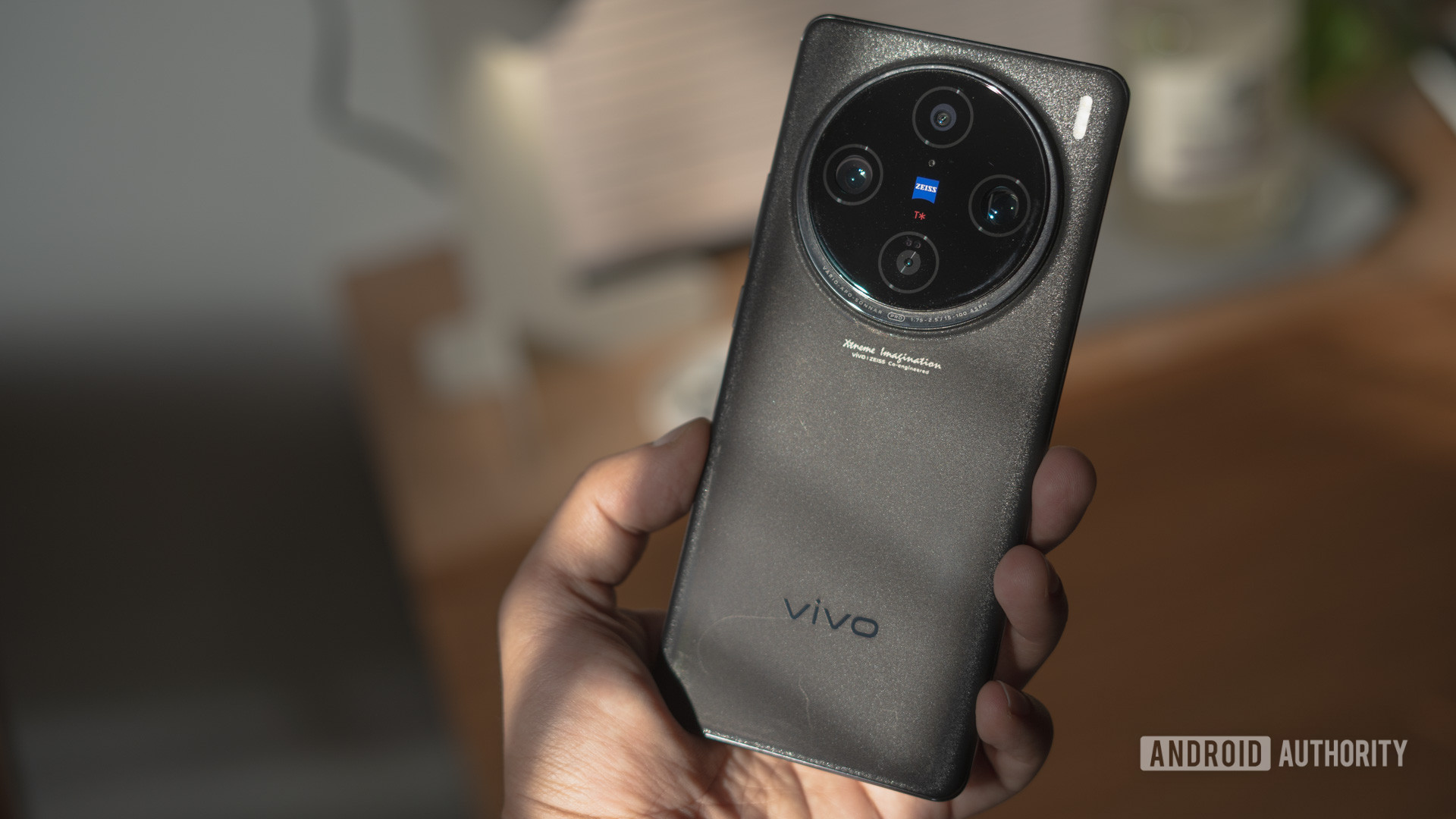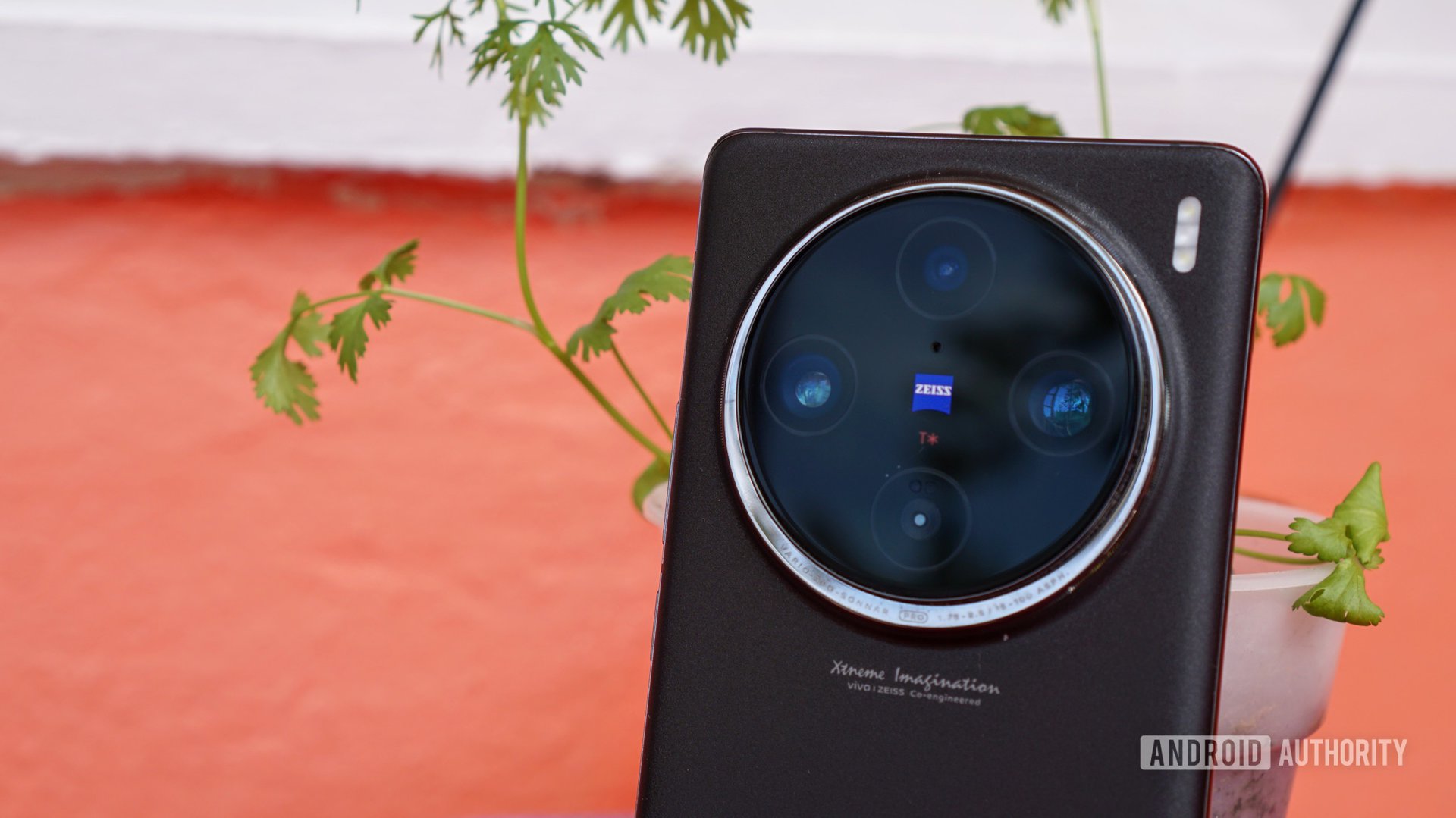
Dhruv Bhutani / Android Authority
My heart lives in two worlds. As a smartphone reviewer, chasing objective authenticity is key when testing out the latest smartphones. However, as a photography enthusiast, I enjoy the flavor that lens imperfections, aged film, and even simulations can impart to a shot.
My camera gear of choice tends to be a Sony A7iii paired up with a Pixel or an iPhone. I’ve dabbled in the iPhone’s Photographic Styles, too. Great as they are, they don’t quite help me recreate the Fuji-esque aesthetic I’ve been leaning towards.
In a vanilla world, I like the excitement and drama the right filter can add to an otherwise mundane shot.
I’ve got the greatest hits of camera smartphones on hand, but lately, I’ve been using the vivo X100 Pro the most. Over the last four months, I’ve traveled across the world, shot over 4000 photos from the X100 Pro, and captured some of my all-time favorite shots. It’s by far my favorite camera smartphone right now, and that’s mostly down to one reason — the built-in filters and lens simulations.
I’ll let the photos do the talking. For the sake of simplicity, I’ve divided the images by scenarios. Daylight, low light, nighttime, and more.
Outdoors/Architecture
No premium smartphone today struggles with outdoor shots; more often than not, the end results come down to interpretation and color science. The straight-out-of-camera shot on the vivo X100 Pro is pretty solid. In fact, the overly warm and saturated look here is very true to life. However, creating a photograph is often about more than just realism.
In this case, I wanted to recreate a late evening feeling on a freezing lake with a hint of old-world nostalgia thrown in. A quick switch to one of the filters accomplished that with ease. Moreover, since these filters work at the ISP level (on the data right out of the camera), there is no degradation in image quality.
Similarly, I’ve used vivo’s extensive collection of filters across the board here. In some cases, like the image of the walkway or the cityscape at the bottom right corner, I used filters that enhance blue tones to emphasize futurism or the co-mingling of the past and the future. In the case of more traditional architecture, I veered towards filters that pushed warmer hues and red tones to create a nostalgic, cozy feeling.
I also dabbled with the phone’s built-in landscape & architecture mode that can do perspective correction in real-time, which, as you can see, did an excellent job at helping me frame straight lines. On the other hand, the circular windows inspired me to strip the image of colors and portray the close crop as a porthole of possibilities. Pretentious, perhaps, but certainly fun.
Street-Style Photography
My preferences in photography veer wildly between stark landscapes, architecture, and street style. When I’m out and about with my mirrorless camera, my workflow involves taking RAW photos, dumping them into Lightroom, and tweaking them for hours.
Predictably, tools like on-board filters speed up that process dramatically. Be it saturated tones to highlight a lively afternoon brunch, people in motion, or futuristic piping in a roastery — having access to what are effectively pre-configured, adjustable LUTs, means that you can focus more on photography and seeing precisely what you are about to get than worry about how you will replicate the look you have in your mind.
Low-Light
Similarly, I’ve found vivo’s built-in camera filters to be helpful when shooting in less-than-ideal light. The default camera tuning tends to boost the contrast a bit too much and can hide the detail in shadows. By no means is it a bad camera. In fact, the light-gathering capacity here is stupendous. Moreover, unlike the Pixel, the vivo manages it in an instant which means blurry shots are practically non-existent.
The vivo X100 Pro’s light gathering capacity is stupendous, but filters can help eke out more detail from the shots.
Depending on the filter of choice, I could bring out extra details in images like the elephant or the bars in Hong Kong. I also used the filters to emphasize the contrast between the red backdrop of a metro station in Milan and the women sitting on the bench. For the photograph of the cocktail, I opted to use vivo’s food mode filter — one of my favorites. The mode picks out an aesthetic focal length and tweaks the color science to make food or cocktails pop.
Filters or lenses are, of course, just a tool, and not every photograph demands it. For example, the sunset photograph was captured exclusively using the standard camera app, and uses vivo’s sunset-oriented computational algorithms. Trust me, the results were better than I could manage from my mirrorless without resorting to stacking multiple photos.
Close-ups
Yes, I know that the photograph on the left is more realistic and true to life. However, we live in a social media world. Images that pop draw more attention. While the food mode on the X100 Pro is designed for, well, food, I’ve found that it is equally capable of adding a subtle but noticeable boost to other subjects. For the intended use case, it’s been an invaluable tool for making a good image great.
By no means are smartphone color filters new, but color filters done right… that’s rare.
Remember when I mentioned that I’ve stopped carrying my mirrorless with me everywhere? The versatility of camera phones is obvious, but the X100 Pro’s filters have helped me be more creative and find more exciting perspectives. By no means are color filters on a smartphone new, but color filters done right… that’s rare.
Night Photography
Filters, of course, aren’t a one-stop solution. Like in the images above, I’ve found that shooting straight up is the best approach for late-night photography. With the cameras already pushing their limits to capture light and detail to create a sharp image, I observed that most filters tended to result in reduced detail and take away from the richness of the shot.
A lesson in smartphone photography

Hadlee Simons / Android Authority
Let me preface this by repeating myself — camera smartphones are no strangers to filters. They’ve been a thing forever but are often pretty basic and sometimes downright trash. Additionally, while it’s impossible to steer clear of computational photography, the purist in me prefers to take matters into my own hands using simple exposure controls or a full-fledged manual mode. So…. What changed?
For one, the vivo X100 Pro’s camera setup is pretty fantastic out of the box. The smartphone captures richly detailed shots with generally excellent white balance and on-point colors. In fact, as I mentioned, many of the photos above were taken straight out of the camera, with minor adjustments for exposure and brightness. But having a solid base allows you to do more. Initially skeptical of using vivo’s filters and lens simulations, I decided to take a leap of faith and came out a changed man.
Opting for filters and simulations on the vivo X100 Pro took a mindset shift, but there’s no going back.
It took a mindset shift from saying filters are bad, to engaging with all the tools at my disposal. This contrasts sharply with my experience with mirrorless photography, where I am looking for the flattest image possible. The ability to effectively realize your creative vision with an image that looks close to what you want has completely transformed how I shoot. No, it’s not going to replace my mirrorless every single time. But, I see myself picking up my camera with much more deliberation, keeping in mind if the tangible benefits would outweigh carrying a hulking camera body and lens.


Vivo X100 Pro
Fantastic periscope camera • Bright, sharp screen • Amazing portrait video
The vivo X100 Pro is one of the top camera phones you can get in 2024. It also brings premium extras like an IP68 rating and fast wireless charging.








